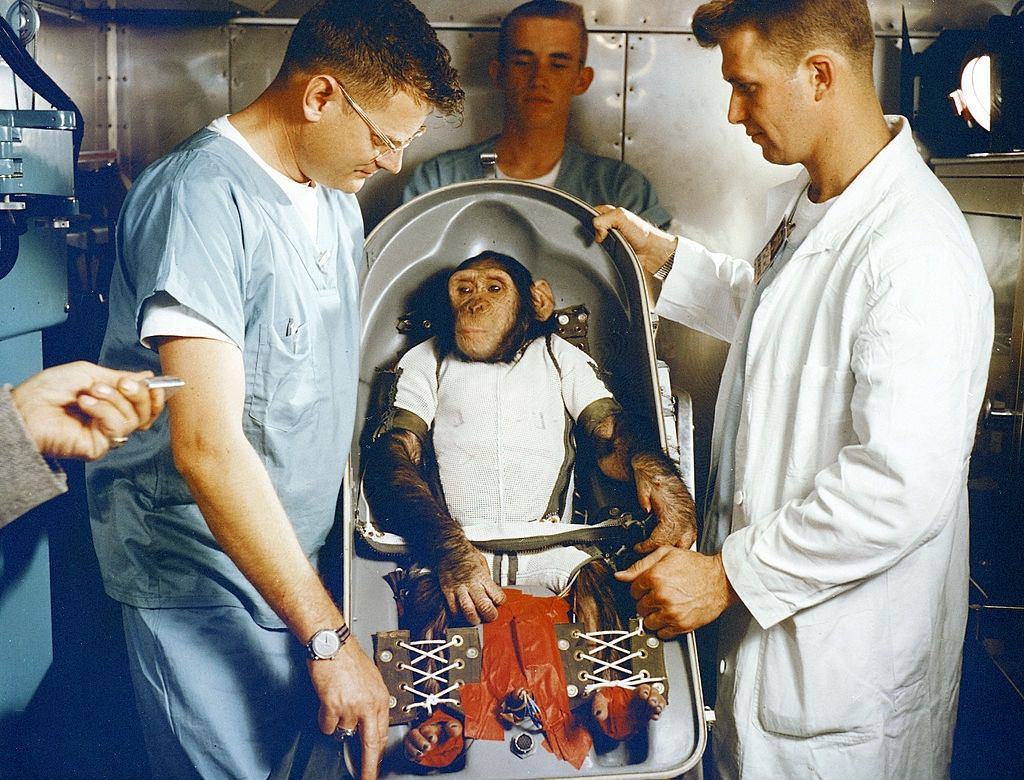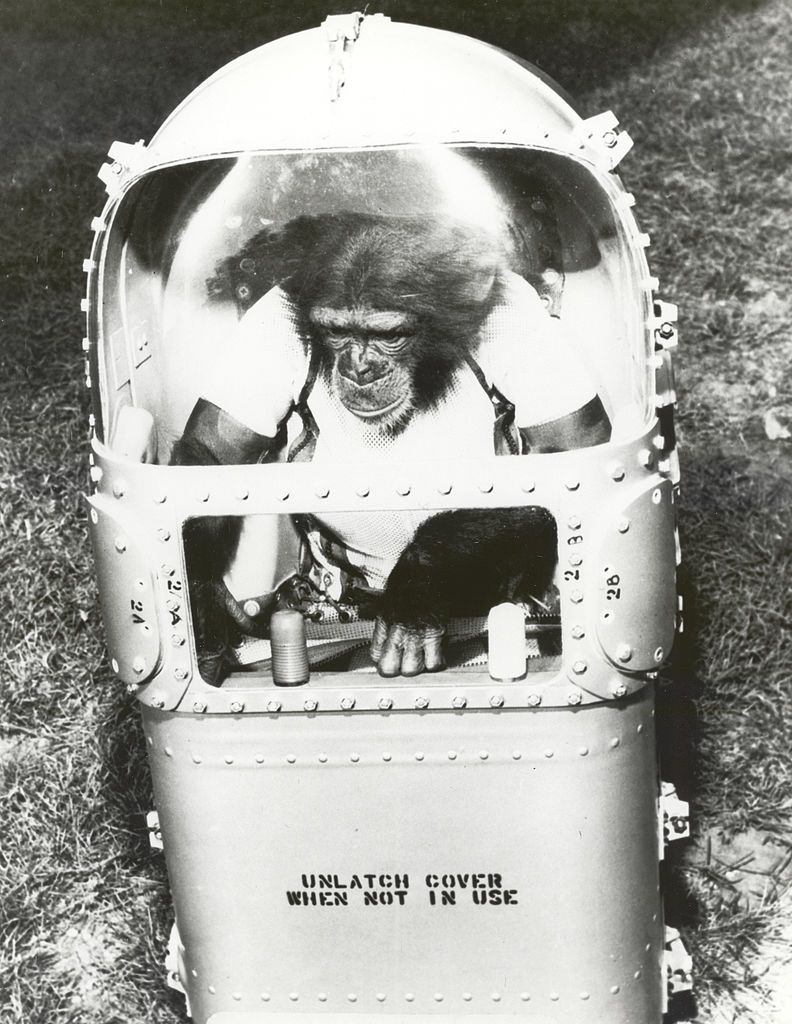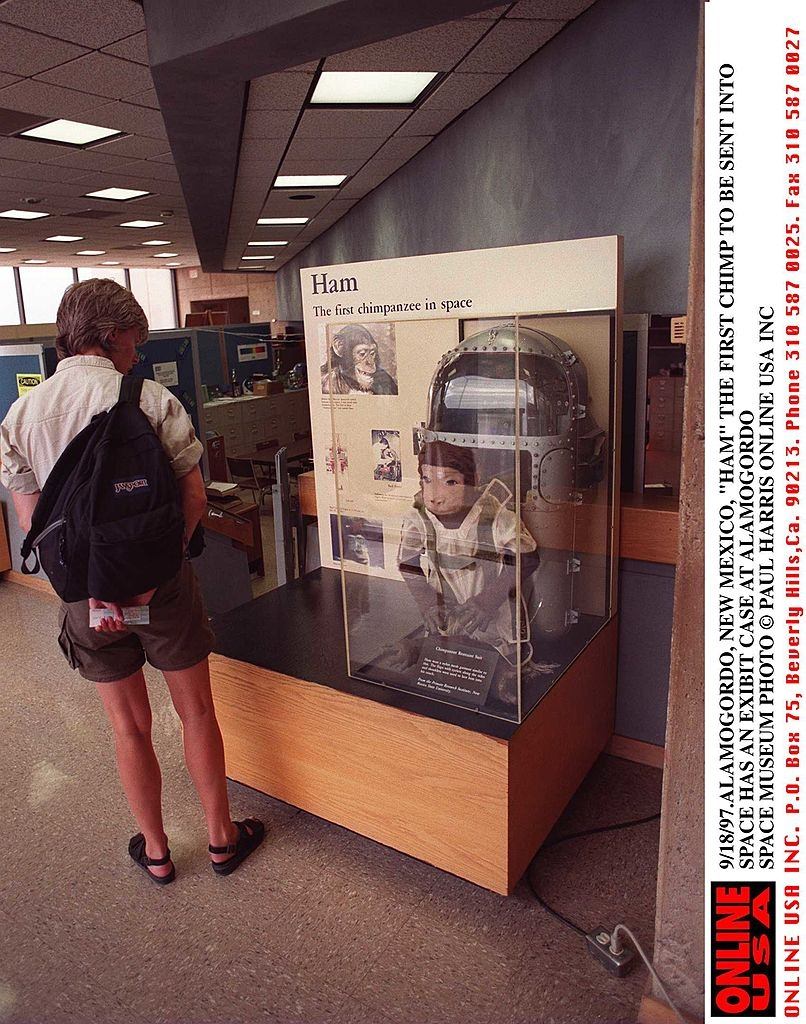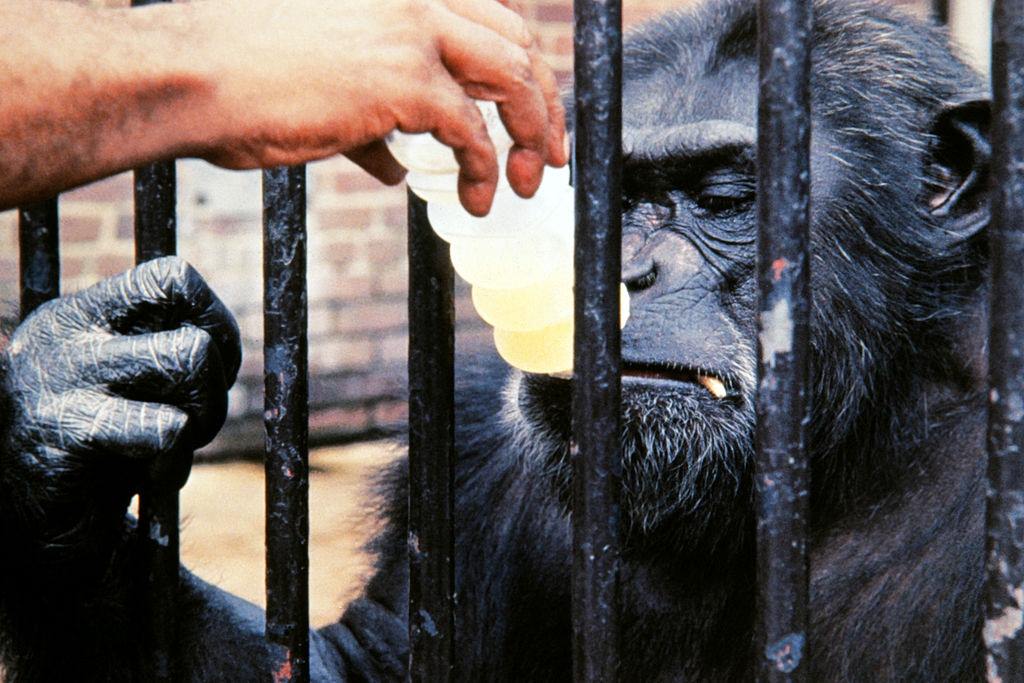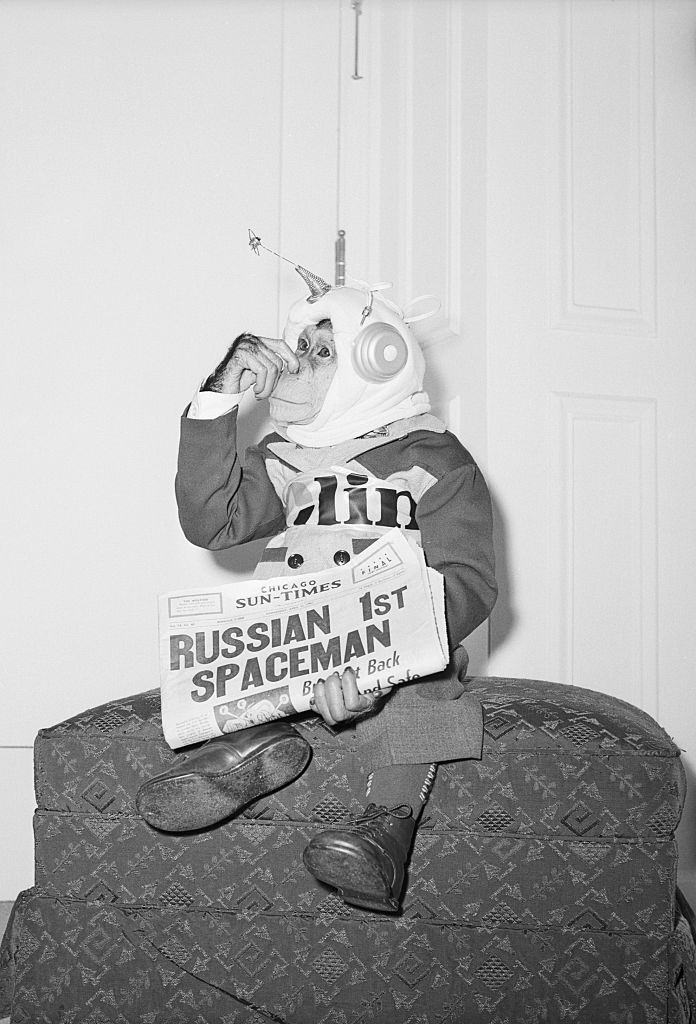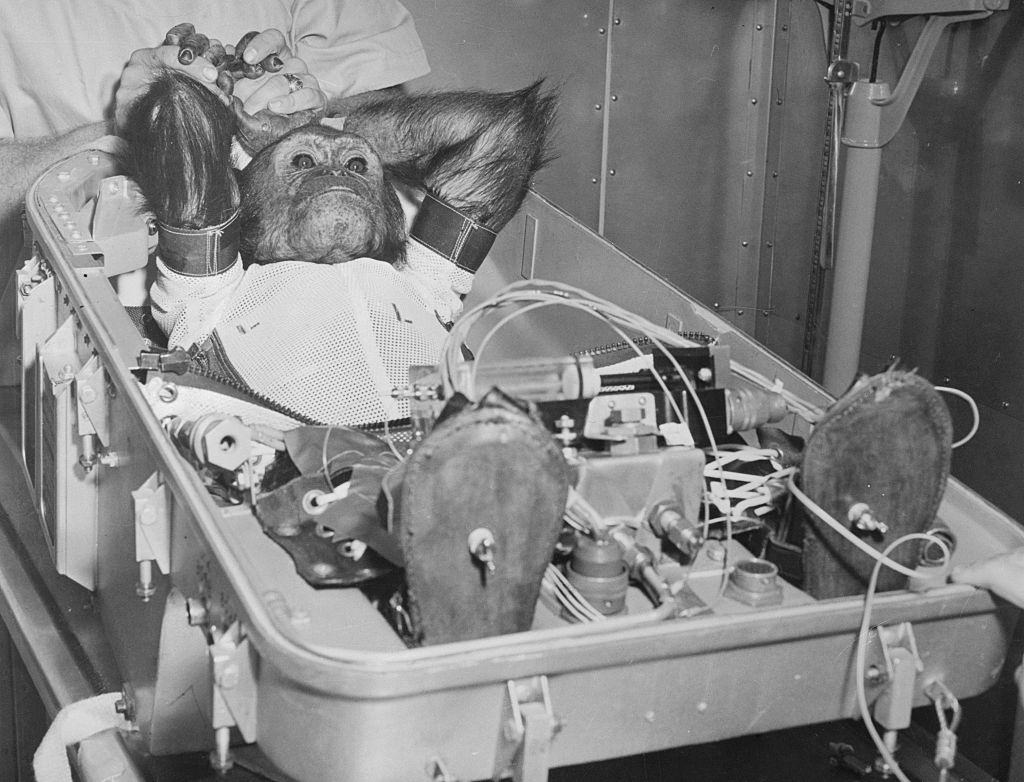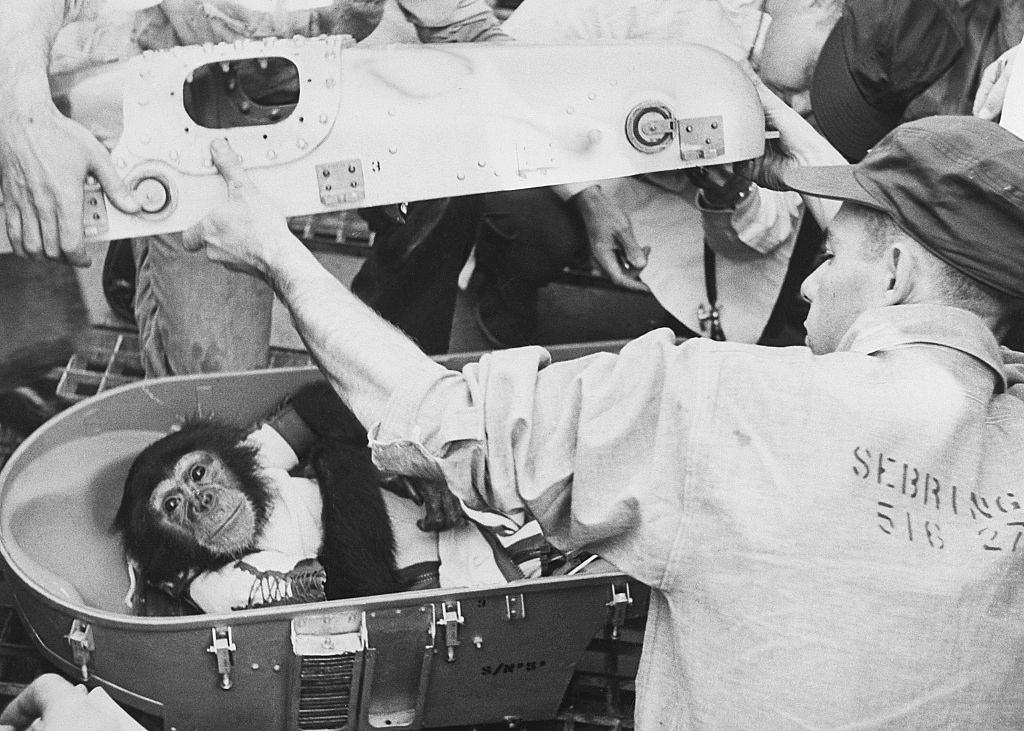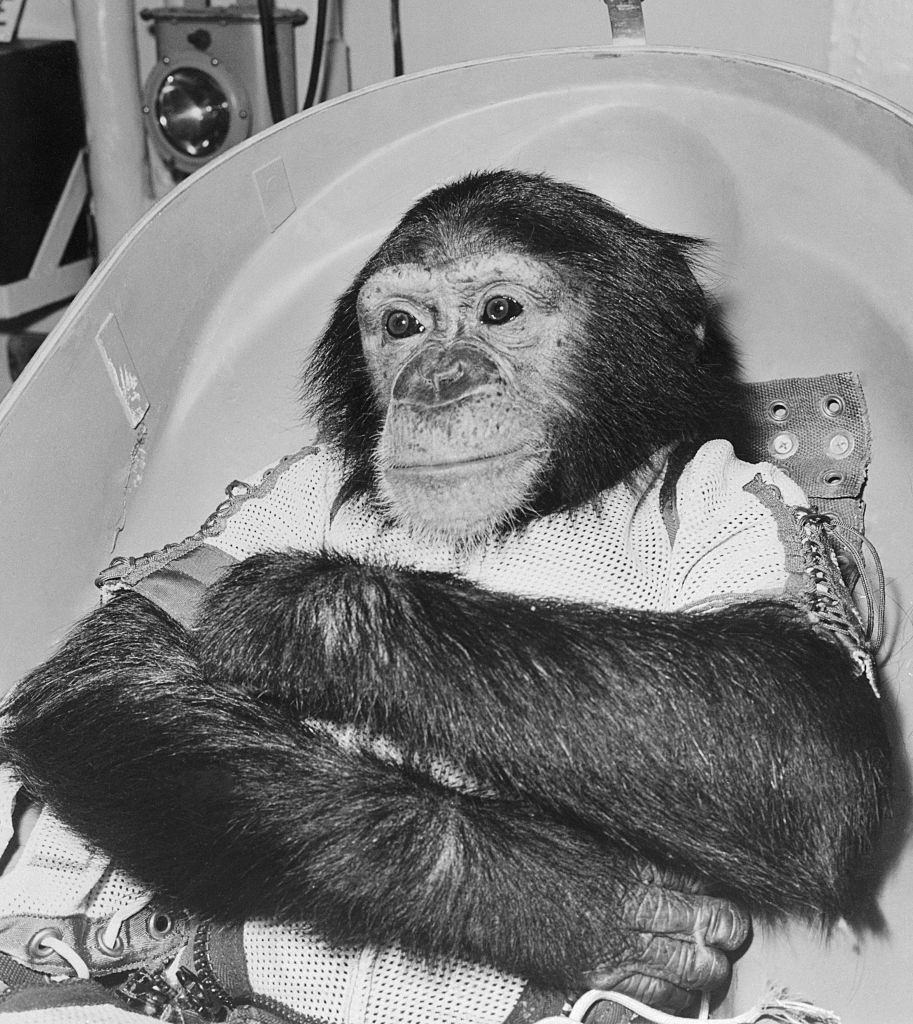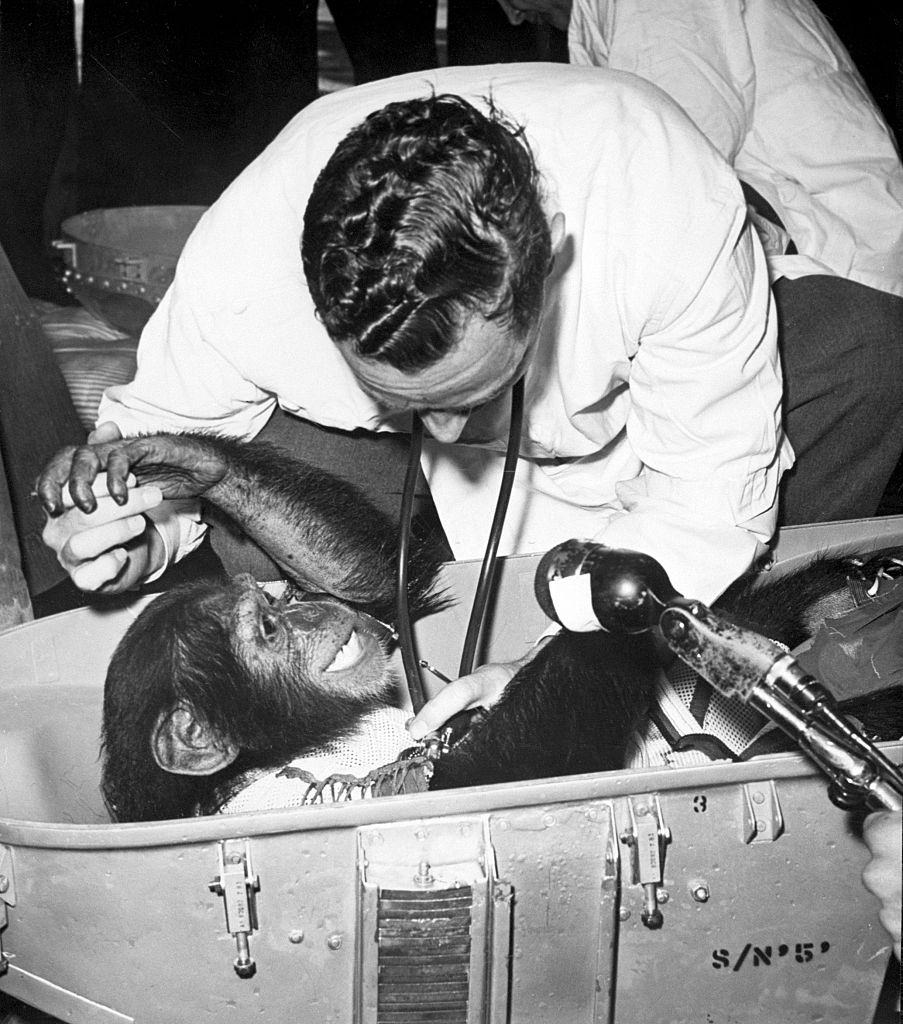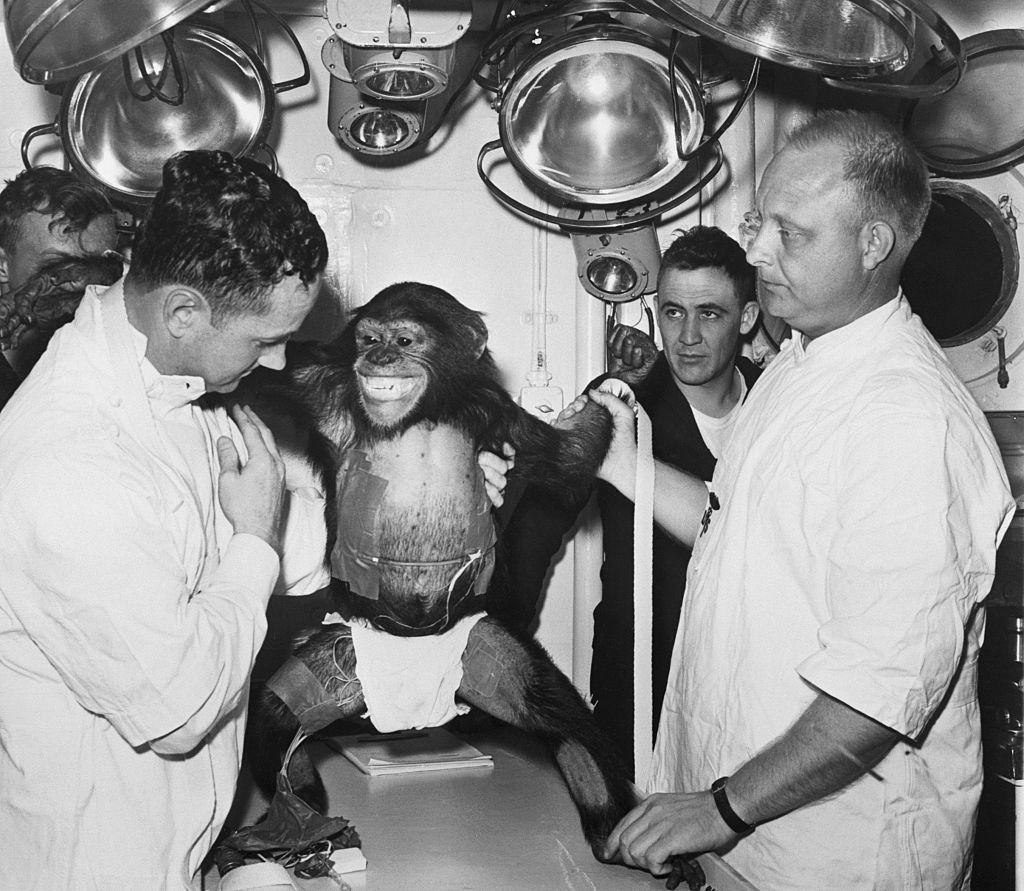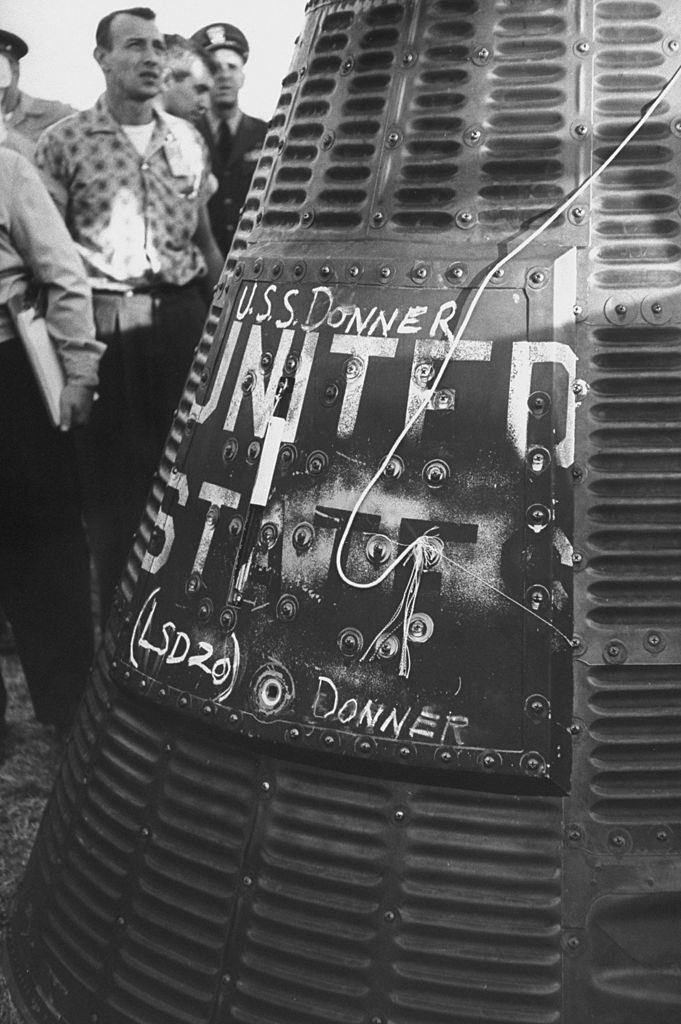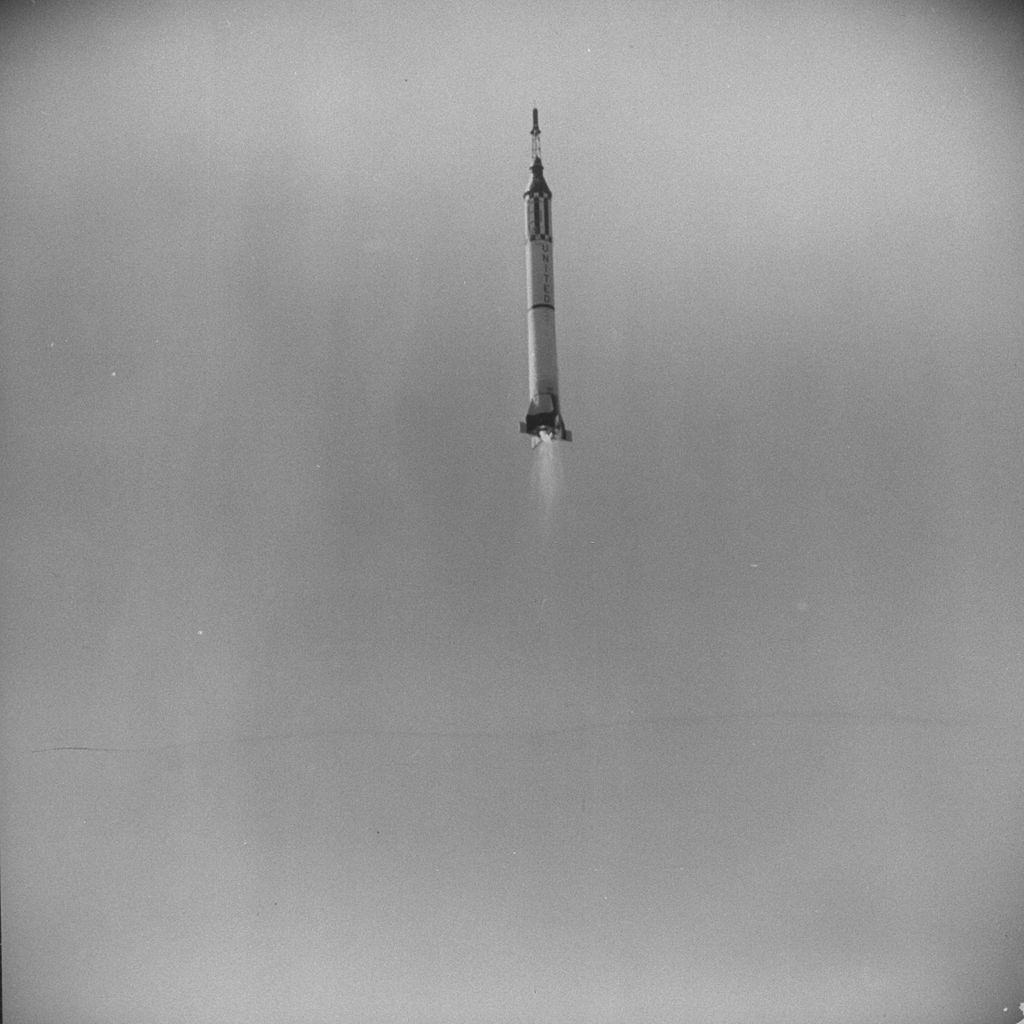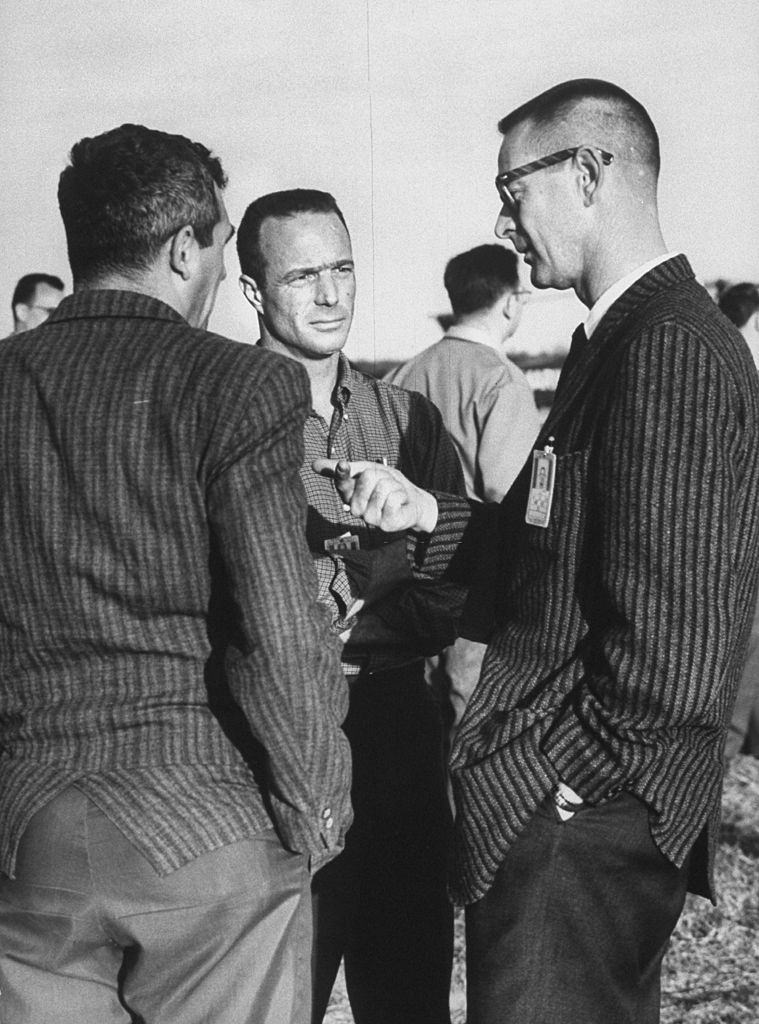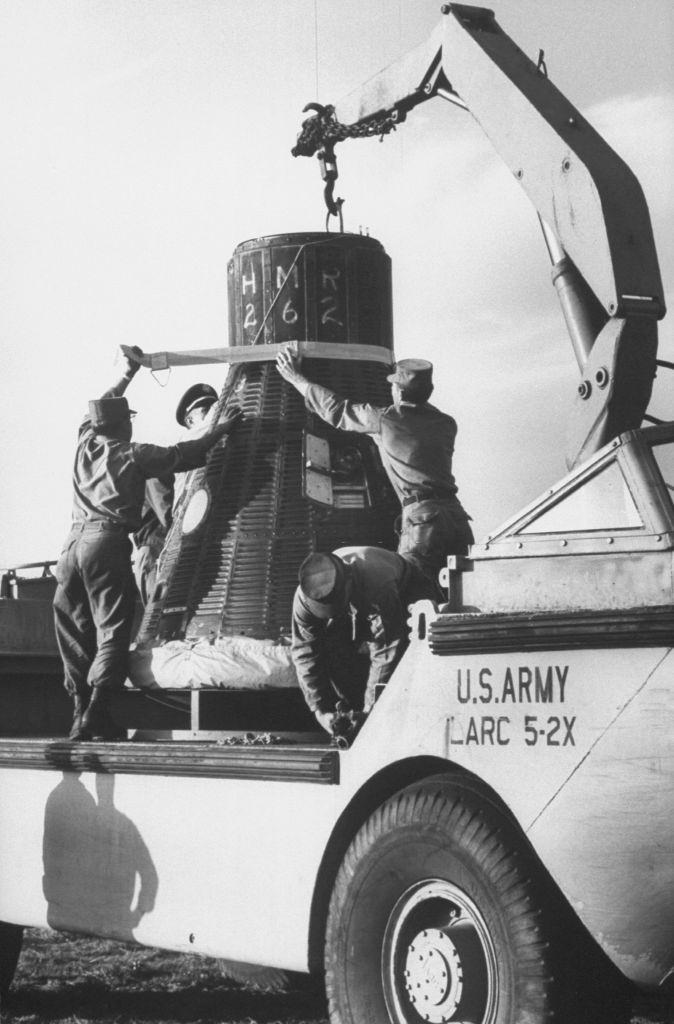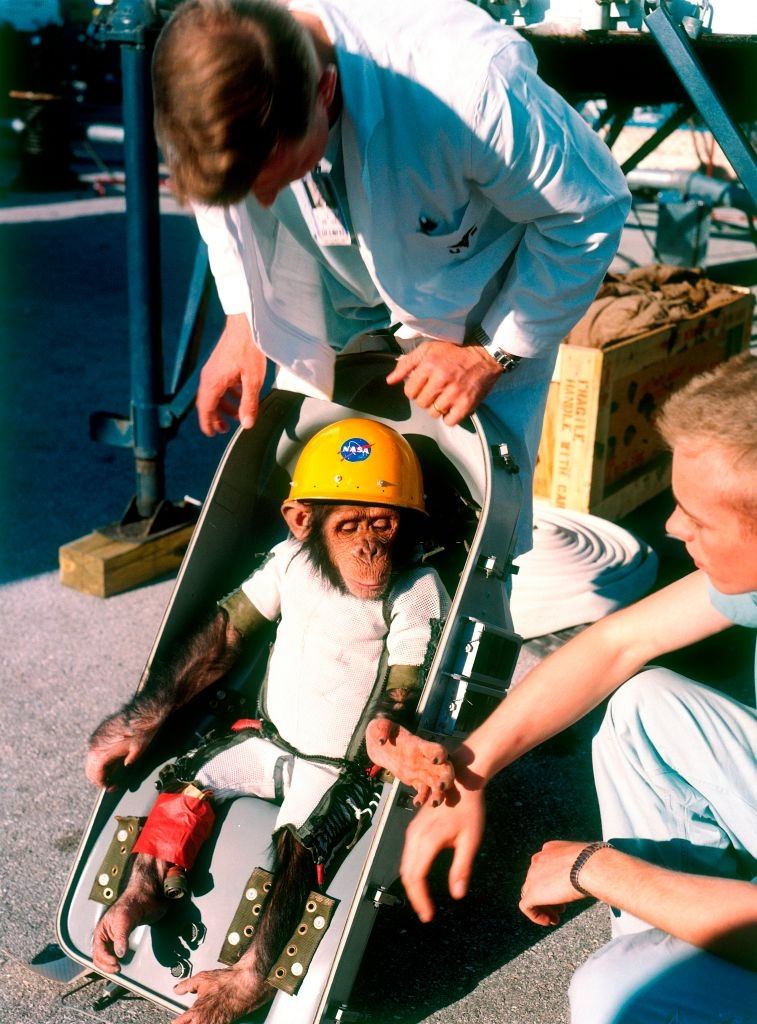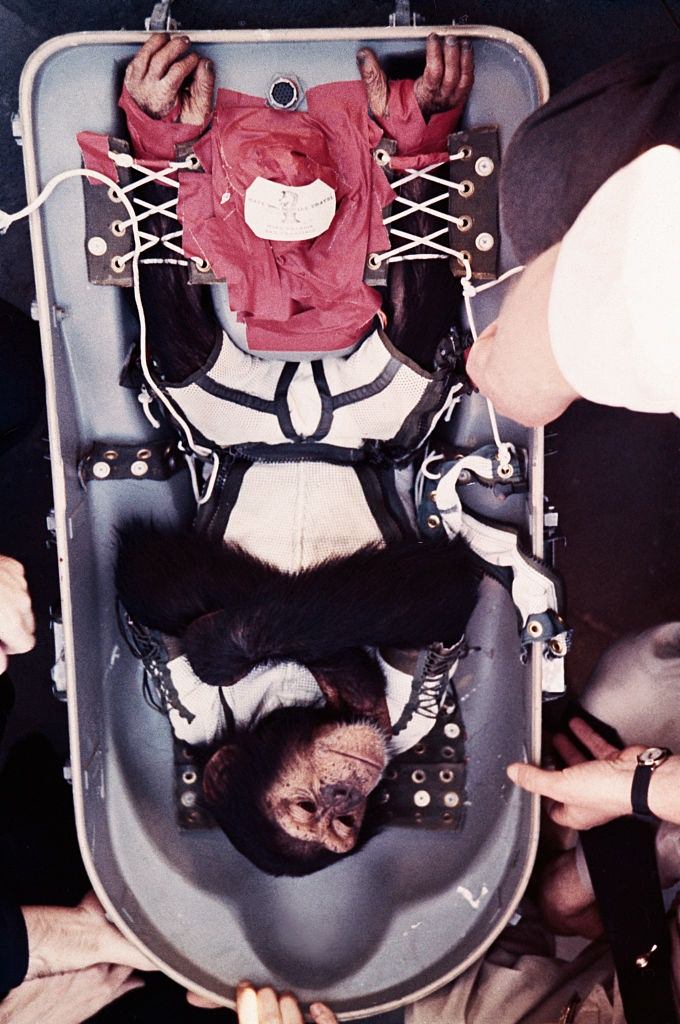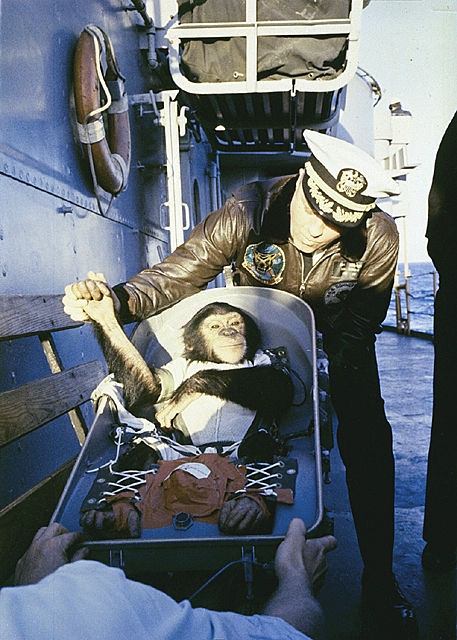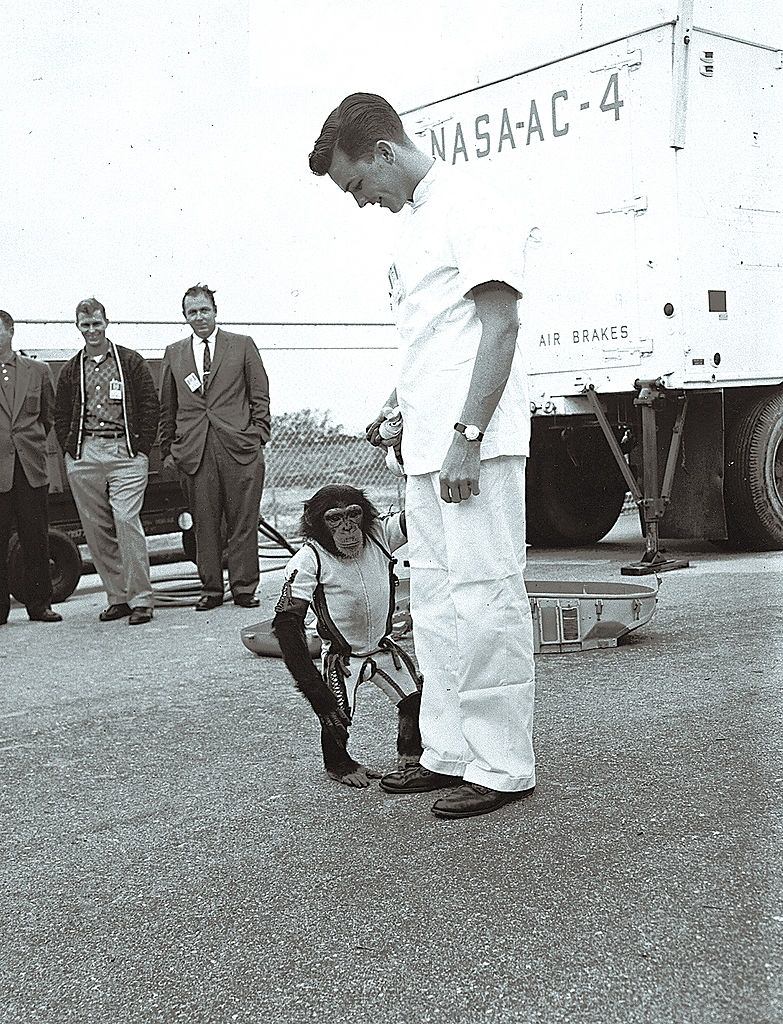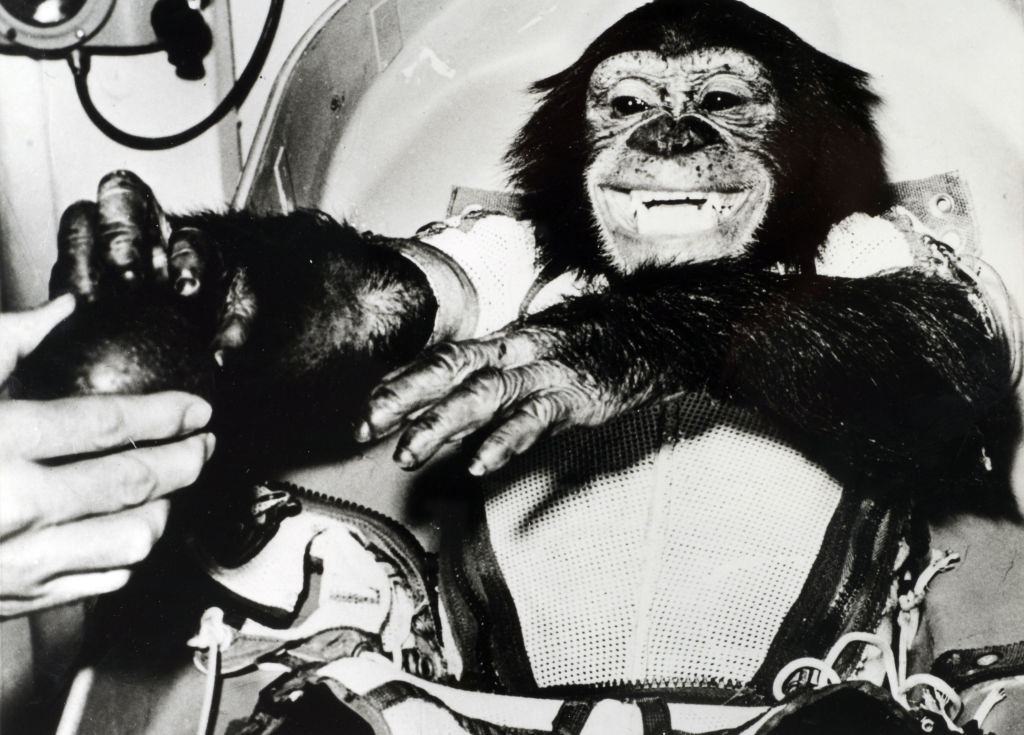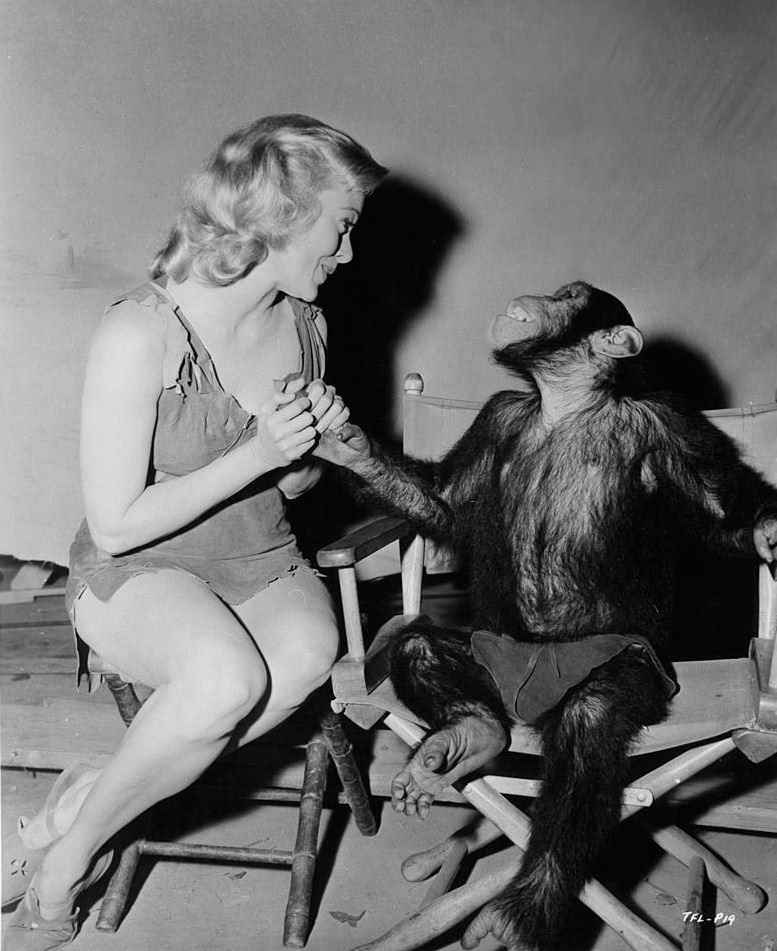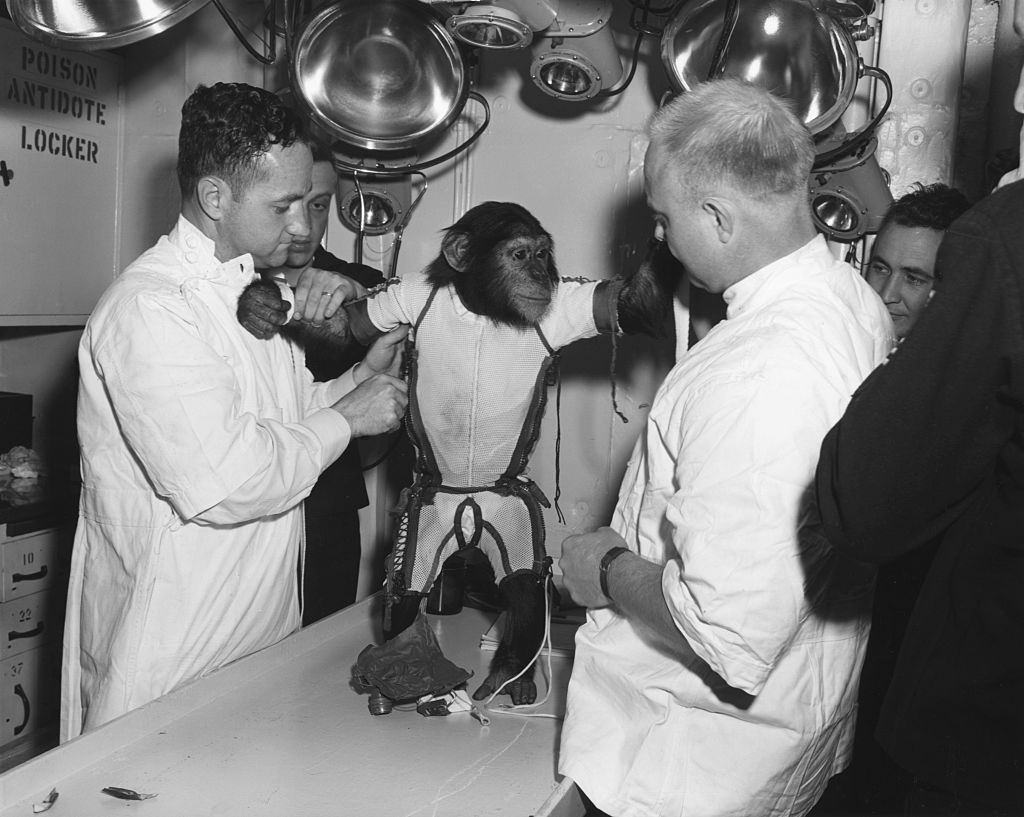Ham was the first chimpanzee that traveled to Space. He flew a suborbital flight on the Mercury-Redstone 2 mission, part of the U.S. space program’s Project Mercury.
Five-year-old chimpanzee “Ham” was fed baby cereal, condensed milk, vitamins, and a half-egg by his handlers early on January 31, 1961. He made aeronautical history aboard a NASA space capsule, traveling almost 160 miles above the Earth at thousands of miles per hour as the first chimpanzee in space. Ham’s flight helped intensify the already fierce competition between the U.S. and the Soviet Union for scientific and Space supremacy and briefly made him a star.
Ham was trained under the direction of neuroscientist Joseph V. Brady at Holloman Air Force Base Aero-Medical Field Laboratory when he was only two years old. His training consisted of simple, timed tasks responding to electric lights and sounds. Ham was trained to push a lever within five seconds of seeing a flashing blue light; if he did not, he would receive a mild electric shock to his soles, while a correct response would earn him a banana pellet.
Ham took part in MR-2, a Project Mercury mission launched from Cape Canaveral, Florida, on a suborbital flight on January 31, 1961. The sensors and computers on Earth monitored Ham’s vital signs and tasks. The capsule’s pressure dropped partially during the flight, but Ham’s space suit protected him from harm. Ham’s lever-pushing performance in Space was only a fraction of a second slower than on Earth, proving that Space tasks can accomplish. Ham’s capsule splashed down in the Atlantic Ocean and was recovered later by the USS DDonner. He suffered only a bruised nose. He flew for 16 minutes and 39 seconds.
Ham was transferred to the National Zoo in Washington, DC, on April 5, 1963, and lived there for 17 years before joining a small group of chimps at North Carolina Zoo on September 25, 1980. Ham’s body was sent to the Armed Forces Institute of Pathology for autopsy after dying on January 19, 1983. After the autopsy, he was to be preserved and displayed at the Smithsonian Institution following Soviet precedents with the pioneering space dogs Belka and Strelka. However, this plan was abandoned after a negative public reaction. Minus the skeleton, Ham’s remains are buried at the International Space Hall of Fame in Alamogordo, New Mexico. Colonel John Stapp delivered the eulogy. Ham’s skeleton is held in the National Museum of Health and Medicine collection.


